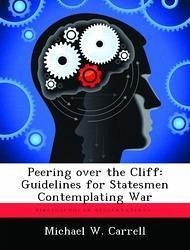This study attempts to determine if there are adequate existing guidelines for today's statesmen to use when they contemplate war. The author first develops a theoretical foundation for understanding the character of an approaching war. The character of a war includes a nation's motives for war as well as their connection to national interests. After establishing the foundation, the study surveys the existing guidelines, from the Weinberger Doctrine of 1984 to the present. Common themes and major differences are highlighted. The guidelines, as a whole, are evaluated for strengths and weaknesses and then compared to the theoretical foundations previously formed. Certain requirements are culled from the examination and applied to a proposed new set of guidelines. These are designed to add the theoretical foundation missing from today's guidance for statesmen considering war. The new set uses questions designed to help statesmen find an answer, rather than prescribe one to them. Finally, potential criticisms to the guidance are addressed.
Hinweis: Dieser Artikel kann nur an eine deutsche Lieferadresse ausgeliefert werden.
Hinweis: Dieser Artikel kann nur an eine deutsche Lieferadresse ausgeliefert werden.








